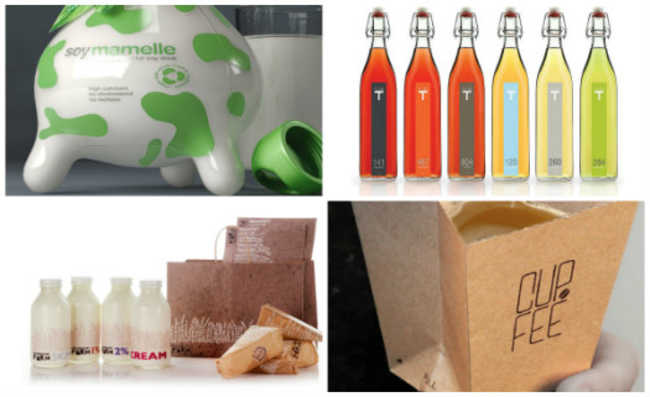What are air emissions?
The term emissions is broad and currently has atmospheric emissions as its main use. Know the types of emissions and understand their impacts

It is common, in ecology, the term "emissions" to be used to speak of the emission or release of gases into the atmosphere. But do you know what atmospheric emissions are? The release into the atmosphere of any liquid, solid or gaseous matter is defined as emission. Atmospheric emissions are divided between point emissions (those made by a source capable of directing or controlling their flow, such as fans, ducts and chimneys) and fugitive emissions (which correspond to the release of matter into the atmosphere in a diffuse manner and without directing devices or control its flow, as in the case of leaks from connections and openings of containers with volatile substances).
Sources of atmospheric emissions
Emitting a gas into the atmosphere is nothing more than releasing it, putting its particles into circulation. Gas emissions can come from natural or anthropogenic (man-made) sources. Let's go to them:
- Natural sources: these are sources that naturally release gases into the atmosphere, such as natural fires and volcanic activities;
- Anthropogenic sources: these are man-made sources of emissions, such as industries, cars and cattle raising, among others.
There is also a way to classify the broadcasting sources according to the nature of each one. Thus, there are two types of emitting sources: mobile and stationary.
- Mobile sources: any source that is not located in a fixed place and can be moved around, ie: cars, aircraft, ships, trains and other means of transport;
- Stationary fountains: the opposite of mobile fountains. They are located in a fixed location, such as refineries, chemical industries and electric power plants.
- Diffuse sources: the concept of diffuse source is close to what is called "fugitive emissions", which are emissions whose sources do not have devices for directing or controlling the flow of gases;
- Point sources: they are more restricted, that is, the emissions depart from a specific point, such as certain processes within industries or energy plants, which have devices to control and direct the flow.
Atmospheric Pollutants
Many of the gases released into the atmosphere are considered pollutant gases. But have you ever wondered what air pollution is?
The Environmental Company of the State of São Paulo (Cetesb) describes air pollutants as any substances that are present in the air in sufficient concentrations to make it unsuitable or harmful to health, causing damage to materials, fauna and flora.
The World Health Organization (WHO) classifies air pollution as "the contamination of internal or external environments by any chemical, physical or biological agent that modifies the natural characteristics of the atmosphere".
Thus, the emission of polluting gases alters the chemical composition of the atmosphere, which can modify the planet's average temperature, which can cause the imbalance of the greenhouse effect and global warming, in addition to the possibility of harming human health and threatening species sensitive to these alterations such as lichens, for example.
According to their origin, pollutants can also be classified as primary or secondary. The primaries are those directly issued by the sources. These can also undergo chemical reaction with a natural compound from the atmosphere or other primary pollutant, which can transform it into a pollutant with greater or lesser harmful potential than the one originally emitted. These pollutants that form later in the atmosphere are called secondary pollutants.
The main atmospheric pollutants causing the greenhouse effect are carbon dioxide (CO2), methane (CH4), nitrous oxide (N2O), ozone (O3) and chlorofluorocarbons (CFCs). Other equally important pollutants are particulate matter, carbon monoxide (CO), sulfur dioxide (SO2), volatile organic compounds (VOCs), and nitrogen oxides (NOx).
Inventories
Atmospheric emissions inventories are tools for making estimates for emissions in a given area at a defined time. In these inventories, first, the pollutants of interest and the polluting sources are identified, the emissions are characterized and finally emission control strategies are proposed.
To ensure consistency between national inventories, the Intergovernmental Panel on Climate Change (IPCC) provides manuals for preparing emissions inventories.
the brazilian program GHG Protocol it seeks, through a Public Emissions Registry, to encourage the preparation and publication of these inventories, in addition to having an area dedicated to the dissemination of published inventories. The Voluntary Public Registry can be done by anyone, downloading the spreadsheets to fill in the inventories through the website of the GHG Protocol. Its publication in the registry is subject to payment of an annual fee.
The Greenhouse Gas Emission Estimation System (SEEG) website also provides documents on Brazil's emissions profile and the evolution of GHG emissions, including those related to changes in the type of land use (fires, deforestation, agriculture, among others).
carbon credits
Created in 1997, but only entering into force in 2005, the Kyoto Protocol aimed to establish more specific goals for the reduction of greenhouse gases (GHG) by the countries that adhered to the agreement. It should include Annex I countries (cited in the Convention on Climate Change), totaling at least 55% of global GHG emissions.
The unit of measurement for calculating emissions and targets is the "carbon credit". One credit is equivalent to one ton of carbon dioxide (CO2). The other gases are also calculated within this unit, through a method called "carbon equivalent", which performs the equivalence of each greenhouse gas in kilograms of CO2.
With that, in 1992 the Carbon Market was created, during the United Nations Framework Convention on Climate Change (UNFCCC). According to the Emissions Trading created, countries that had emission limits left over, that is, that had reduced their emissions beyond their target, could sell the remaining credits to Annex I Nations that were emitting GHG in excess of the limit. In this way, countries could act together to meet the stipulated targets, helping each other.
In Brazil, national air quality standards were established by the Brazilian Institute for the Environment and Natural Resources (Ibama) and approved by the National Environment Council (Conama) by Resolution 003/1990, in addition to Law No. 12187, of 2009, establishing the National Policy on Climate Change. The Carbon Dioxide Information Analysis Center (CDIAC) provides a ranking of total and CO2 emissions by country.
Neutralization and reduction of CO2 emissions
To reduce the greenhouse effect, an alternative that can be used is the neutralization (or compensation) of polluting gas emissions. Some techniques that can be applied are reforestation, the use of cleaner energy sources and forest preservation itself. If you, as an individual, want to neutralize your CO2 emissions, some tips are to use ethanol as a fuel for cars, which is less harmful to the environment than gasoline, use public transport and reduce energy consumption. As for the companies, the neutralization of emissions is a differential that has been attracting attention. Some have already joined the Gesto Verde project, which carry out campaigns to neutralize the CO2 emitted by blogs and websites.
- Does alcohol pollute less?
- Gesto Verde Campaign wants to neutralize CO2 emissions on blogs
- e-Commerce is also responsible for CO2 emissions, and the eCycle portal are already worried about it
In case you are curious to know what your carbon footprint is, there are emissions calculators available on the internet - based on a few simple questions, they will estimate your annual gas production.
Furthermore, in order to reduce pollution levels, there must be not only strict legislation on the maximum values allowed for the concentration of each pollutant in the atmosphere, but also adequate and efficient monitoring mechanisms for polluting sources. The investment in less polluting energy sources and the use of equipment that reduce the levels of pollution emitted, such as automotive catalysts and filters in industrial chimneys, must also be increasingly encouraged. Public policies aimed at improving and consequently encouraging the use of public transport could greatly reduce pollutant emissions by motor vehicles, as well as reforestation and control of fires.
In 2014, in a study carried out by Centro Clima in partnership with Greenpeace, it was found that in Brazil there is a growing concern with energy efficiency, which has reduced emissions from automotive vehicles and wasted energy. Also in 2014, Brazil was the only country to present positive results towards the goal of reducing GHG emissions (greenhouse gases). This only leads us to believe and hope that, as knowledge advances about polluting gases and their consequences for human health and the environment, the awareness and interest of the Brazilian population in reducing their emissions will increase.
The video gives us lessons about everyday actions that pollute or degrade the environment in some way, and that can and should be rethought and modified so that we can reduce our emissions:
For those who are curious, the Center for Weather Forecasting and Climate Studies (CPTEC) provides a tool for monitoring and forecasting air quality in Brazil, where you can manipulate the pollutant to be analyzed, the date and time of the day, as well as the vertical level observed.










